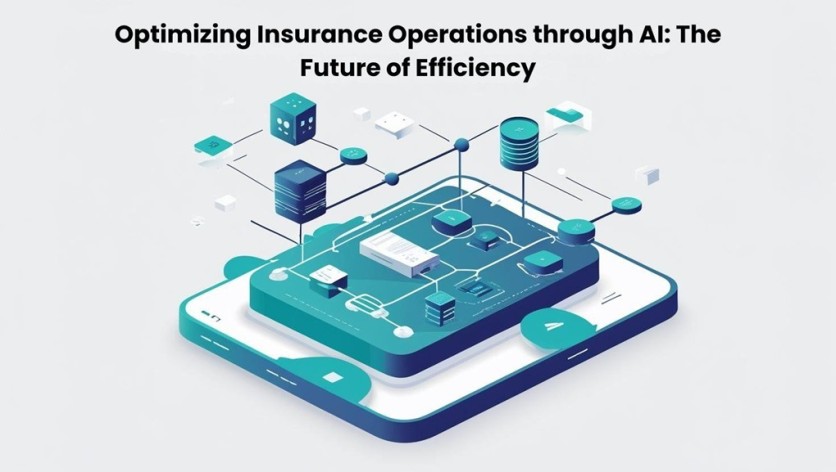
In the rapidly evolving world of insurance, operational efficiency is paramount. Chetan Prakash Ratnawat's article offers a deep dive into the transformative role that Artificial Intelligence (AI) plays in optimizing insurance processes. By highlighting innovative AI-driven solutions, he presents how these technologies are reshaping underwriting, claims processing, and agent management. This technical implementation guide outlines a pathway for insurance organizations to adopt these technologies to improve overall performance and maintain a competitive edge.
Revolutionizing Workflow Management
Traditional insurance operations often suffer from inefficient manual processes, leading to delays and resource wastage. According to the analysis presented in the article, AI technologies, including machine learning and robotic process automation, have the potential to drastically reduce inefficiencies. In fact, AI-driven solutions can cut claims processing times by up to 75%, drastically improving customer satisfaction and cutting operational costs by as much as 50%. This efficiency leap is possible due to AI's ability to analyze workflows intelligently and automate time-consuming tasks, such as document verification and data entry.
Automated Underwriting: Speed and Precision Combined
One of the most significant innovations described is AI-enabled underwriting. Traditionally, underwriting in the insurance sector has been a time-intensive process, often taking days to complete. With AI, however, insurers can process up to 3,000 applications per hour with 99% accuracy. The integration of AI in underwriting processes has reduced decision-making time from several days to just minutes for standard policies. These improvements have allowed insurers to handle complex commercial policies 75% faster than before, with AI capable of analyzing hundreds of risk factors in real-time .
Enhancing Claims Processing through AI
The article also highlights how AI is revolutionizing claims processing. The traditional model of claims handling involves numerous manual checks and assessments, often leading to delays and increased costs. AI's integration into this process has resulted in an average reduction of 50% in claims cycle time and a 30% decrease in associated costs. A particularly noteworthy advancement is the use of AI for fraud detection. AI algorithms can now identify fraudulent claims with up to 95% accuracy, saving the industry billions of dollars annually.
Improving Customer Service with Automation
AI-driven solutions also significantly enhance customer service. The automation of customer inquiries through AI-powered systems has led to a 65% increase in the number of customer inquiries handled, while reducing response times by 80%. These systems are designed to process routine requests, allowing human agents to focus on more complex cases. The integration of Natural Language Processing (NLP) further streamlines the process, as AI can interpret customer communication accurately, minimizing the need for manual intervention .
Data-Driven Decision Making
AI's potential extends beyond operational efficiency to include improved decision-making through predictive analytics. Insurance organizations leveraging AI technologies can make more accurate pricing decisions and better assess risk, leading to a 40% reduction in loss ratios and a 50% increase in underwriting accuracy. AI-powered predictive analytics also assist in identifying potential fraud and optimizing claims handling, with up to 92% accuracy in fraud detection.
Integration of AI Across Systems
Another major innovation lies in the seamless integration of AI systems across existing insurance infrastructures. The article emphasizes how AI-driven platforms can be easily integrated with core systems, enabling insurers to achieve smoother workflows and reduce manual touchpoints. Studies show that digital platforms reduce data entry errors by 80% and enhance system scalability, ensuring more efficient processing and lower IT maintenance costs. This integrated approach leads to better data synchronization, which improves overall operational accuracy and minimizes delays.
Future Scalability and Enhanced Capabilities
Looking to the future, the article highlights the scalability of AI-powered insurance platforms. By 2025, it is projected that AI will be responsible for processing over 75% of all insurance transactions. With this scalability, insurers will benefit from reduced operational costs and enhanced customer satisfaction. AI-driven systems will be able to handle more complex data and provide personalized pricing for policies, driving up profitability while reducing inefficiencies.
In conclusion, Chetan Prakash Ratnawat's exploration of AI innovations in insurance reveals that adopting these technologies can significantly enhance operational efficiency. AI-driven solutions in underwriting, claims processing, and customer service offer cost-effective improvements. As technology evolves, AI's role will increasingly shape the future of the insurance industry, driving both innovation and competitive advantage.
ⓒ 2025 TECHTIMES.com All rights reserved. Do not reproduce without permission.




